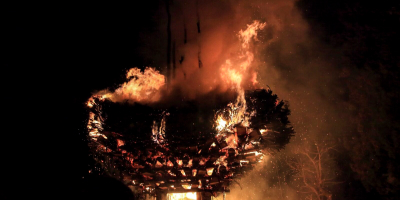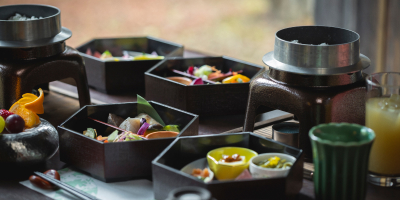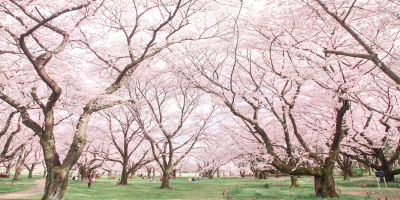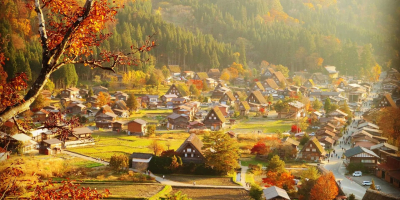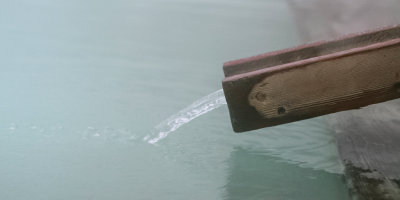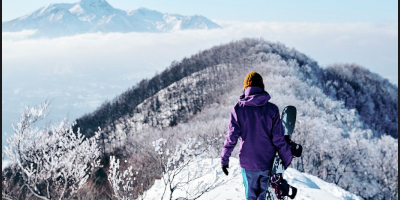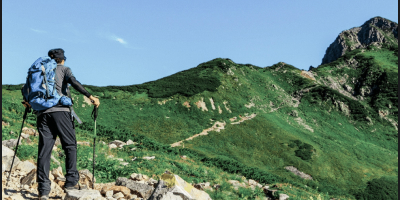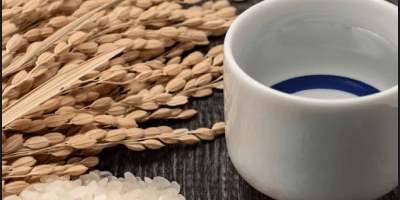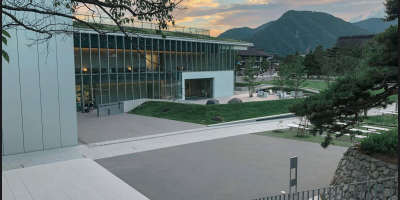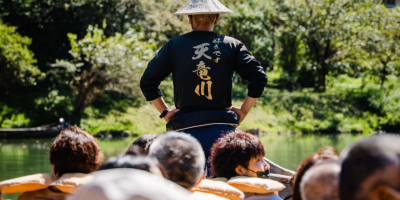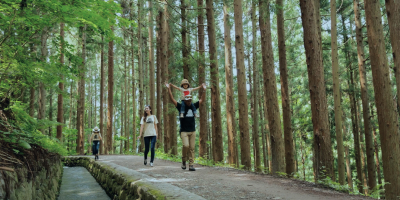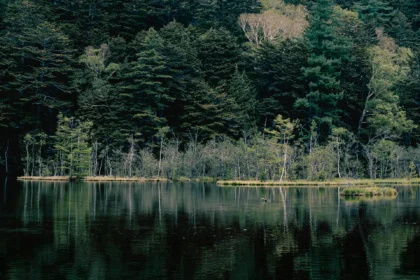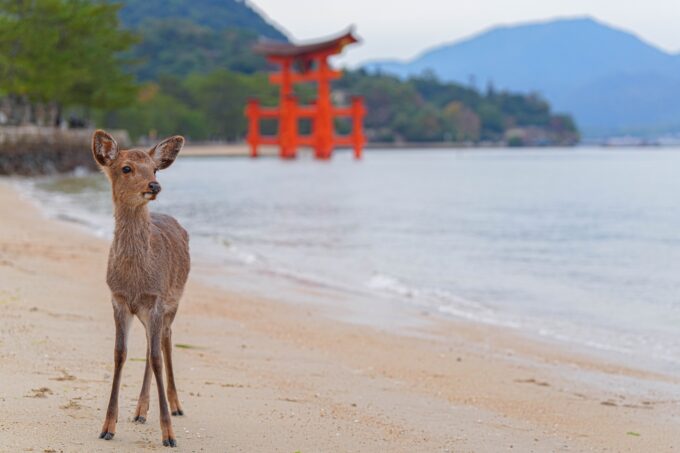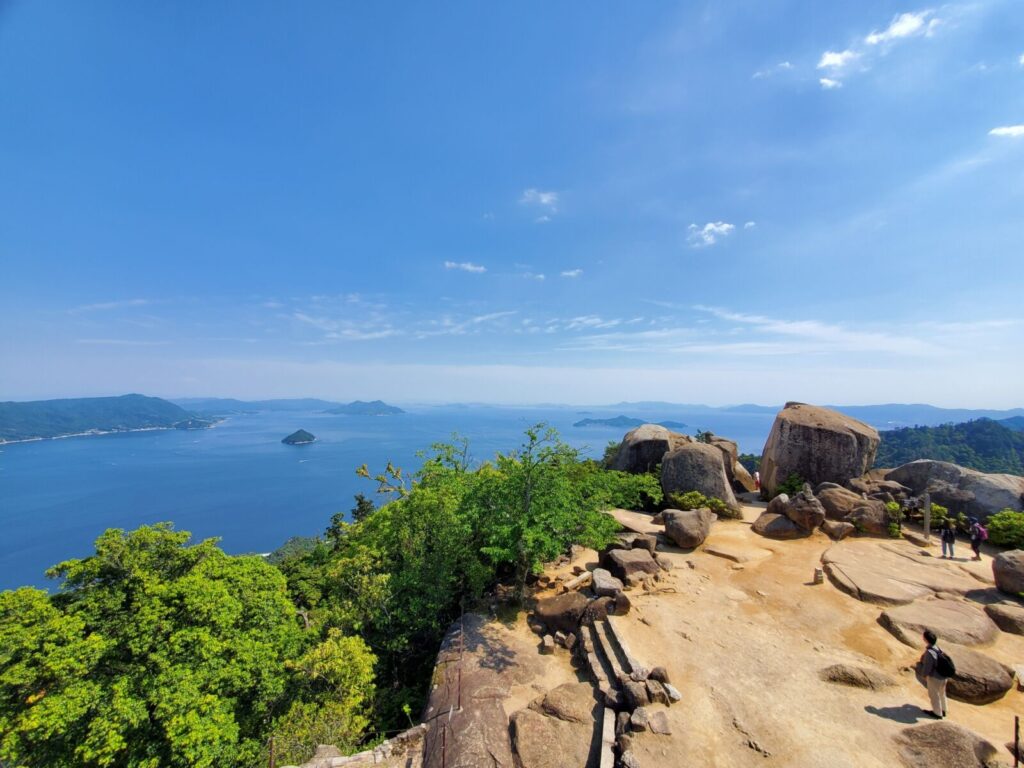
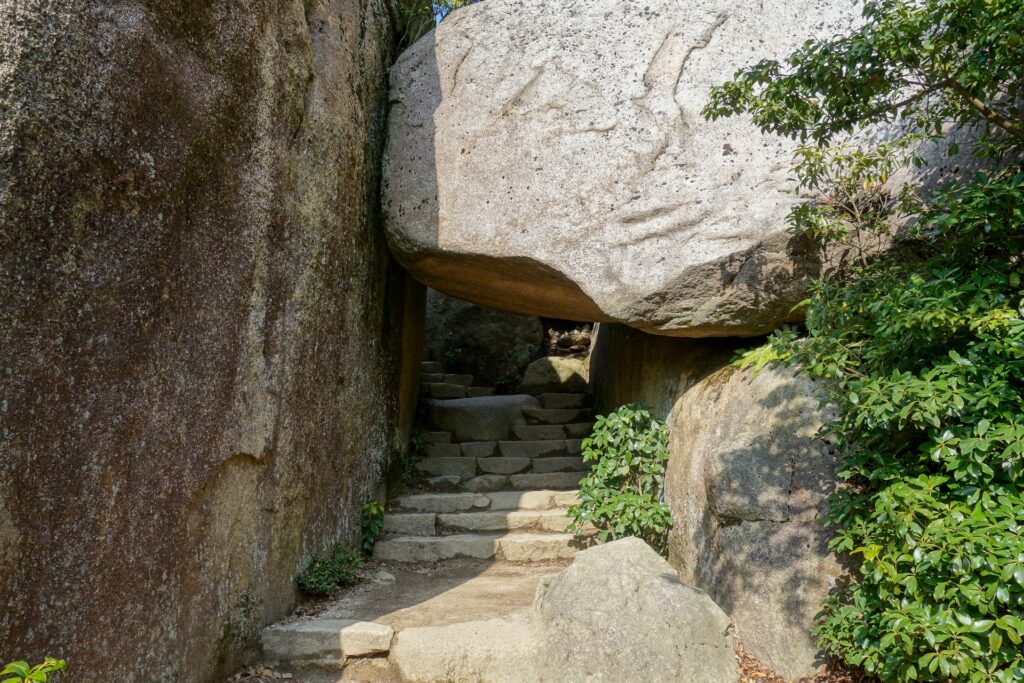
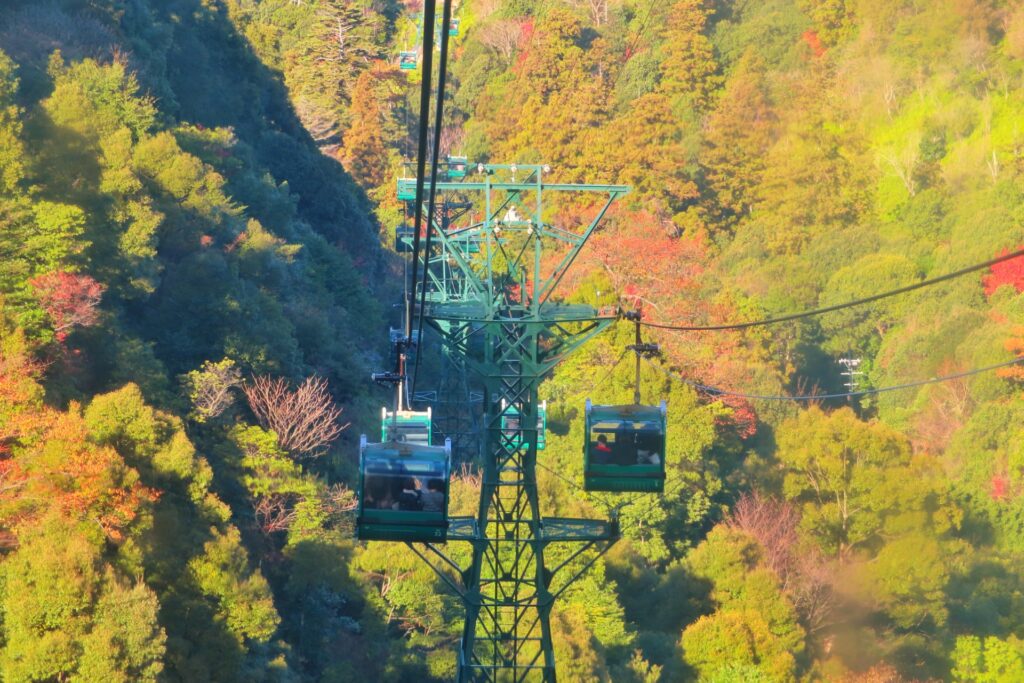
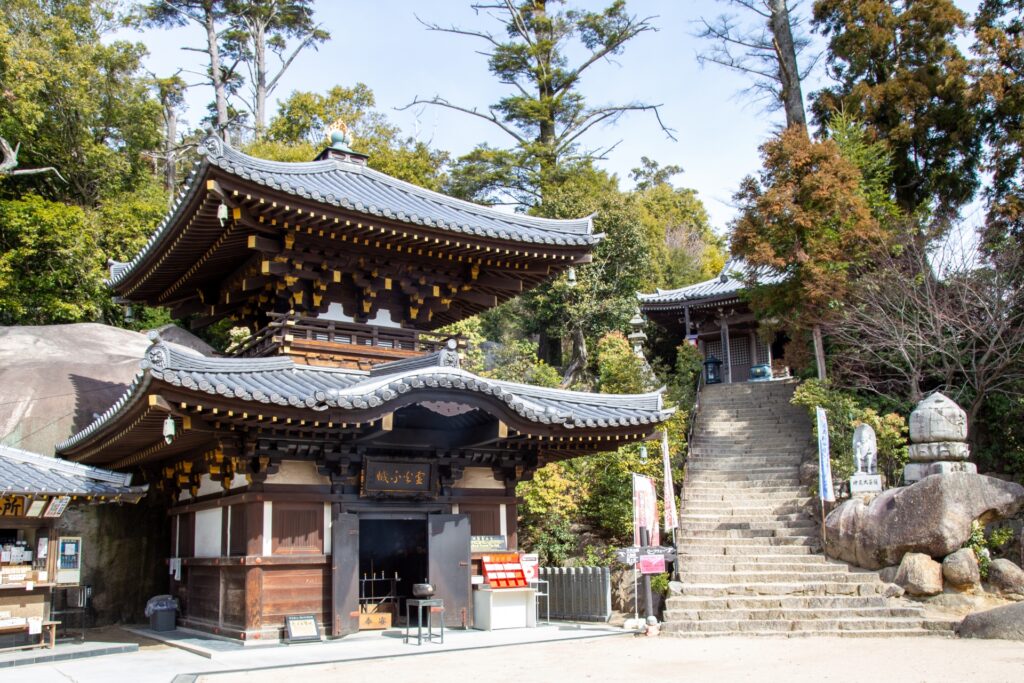
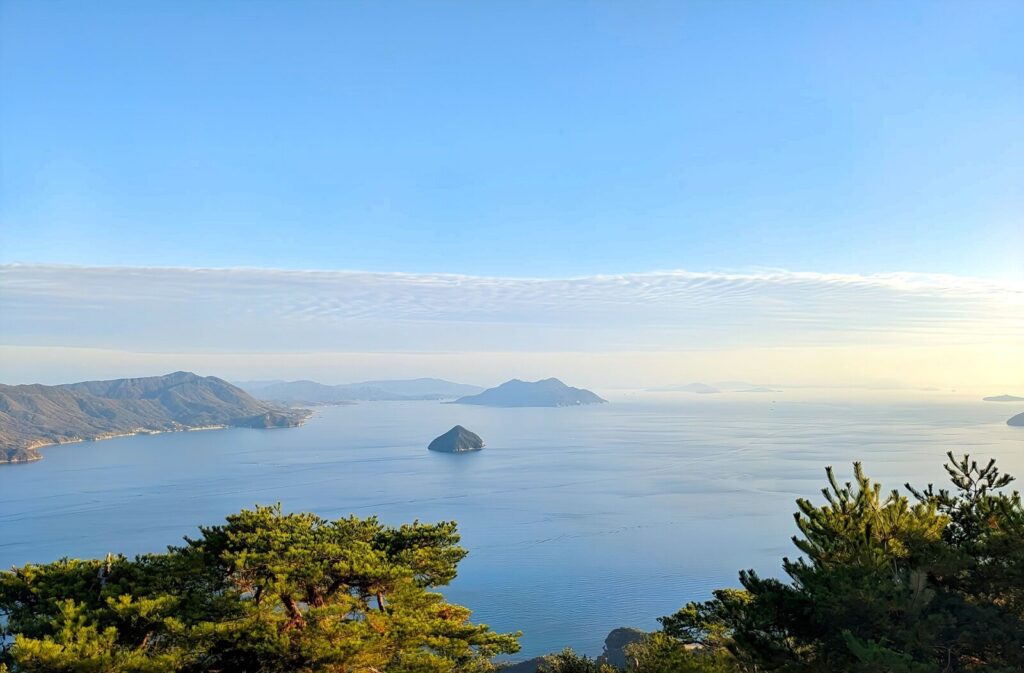
This mountain is truly special, as it is deeply tied to the history of the island and the introduction of Buddhism to Miyajima. On this page, you will be able to find out details about the historical events which transpired on this mountain as well as information about the different hiking trails, the ropeway, sightseeing spots, and much more!
-- The Seven Wonders of Mount Misen
-- Ropeway
WHERE IS MOUNT MISEN?
Mount Misen is located on the island of Miyajima within Hiroshima Prefecture. The mountain lies very close to the coast and can be easily reached on foot from the ferry terminal. There are three hiking trails and a ropeway which give access to Mount Misen. Below, you can find more information about the ropeway and the different hiking routes.
HISTORY OF THE MOUNTAIN
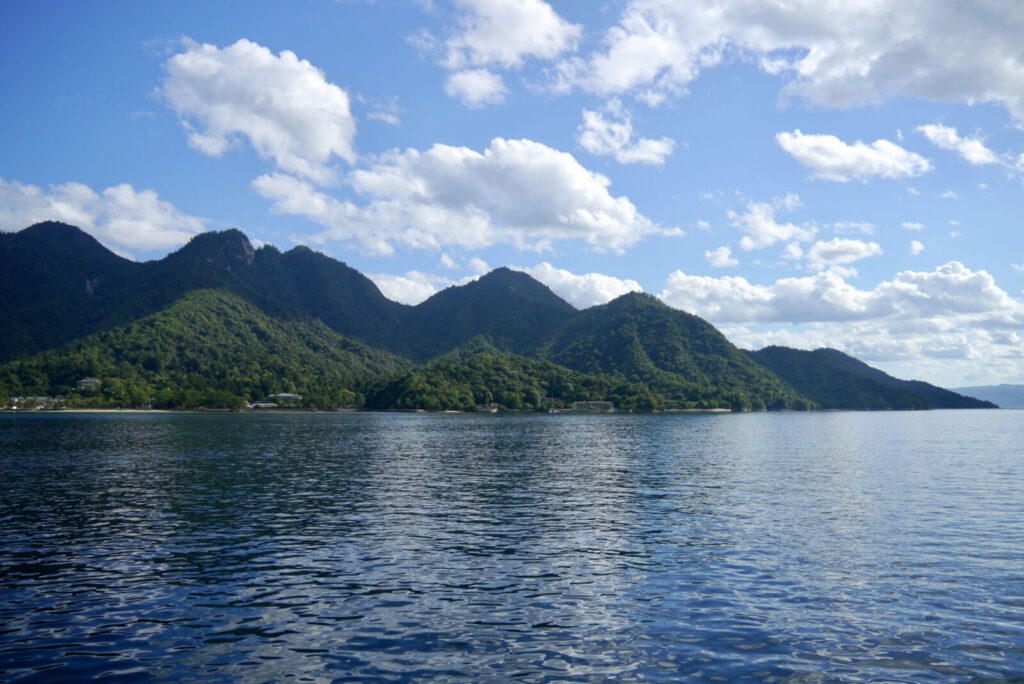
Much like the island it is located on, Mount Misen was largely unexplored for many centuries. Its history as a holy site did not begin until 806, when the Buddhist monk Kūkai decided to carry out his rigorous training on the mountain. He arrived to the island of Miyajima and sensed that Mount Misen was a place with high spiritual energy. For one hundred days, he ceaselessly recited mantras and engaged in ascetic practices. He also built a hall, currently the Misen Hondo Hall, as a place for him to complete this training.
One of the ceremonies Kūkai performed during this time is known as the Goma Fire Ritual. In it, wooden sticks which symbolize things that must be cleansed and released are burned in a fire which represents the wisdom of the Buddha. It is said that the fire which was lit by Kūkai to carry out this ceremony still burns to this day, and this “eternal flame” is kept in a hall which lies opposite to the Misen Hondo Hall.
Kūkai was the monk who founded the Shingon sect of Buddhism in Japan, and as such, mostly all the Buddhist temples on the island belong to that sect. Throughout the next hundreds of years more halls were added at the top of Mount Misen, and they still serve as precious praying sites today. Kūkai’s importance to this mountain cannot be overstated, as it was he who named it Misen due to its resemblance to Mount Shumisen, the center of the world in Buddhist cosmology.
SIGHTSEEING SPOTS
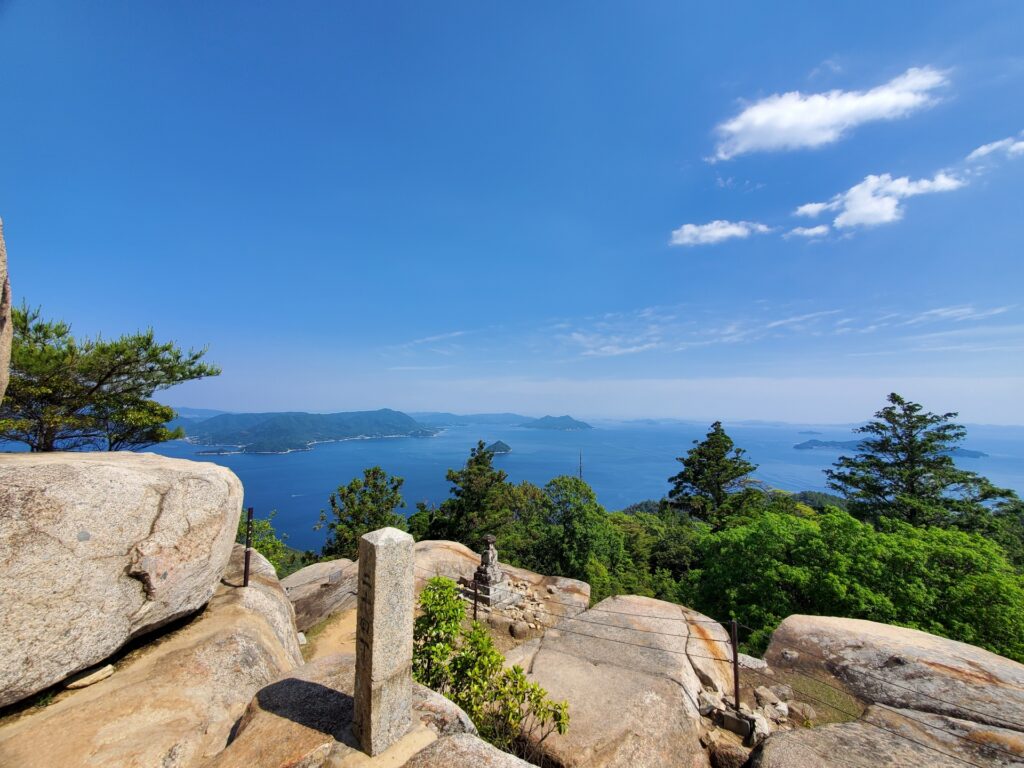
Throughout Mount Misen, one can encounter multiple halls and observatories which reveal the history of the mountain as well as add to its beauty. Below, we have listed some of the locations you might encounter on your way up to the summit or back down to the Shishiiwa Ropeway Station.
Shishiiwa Observatory
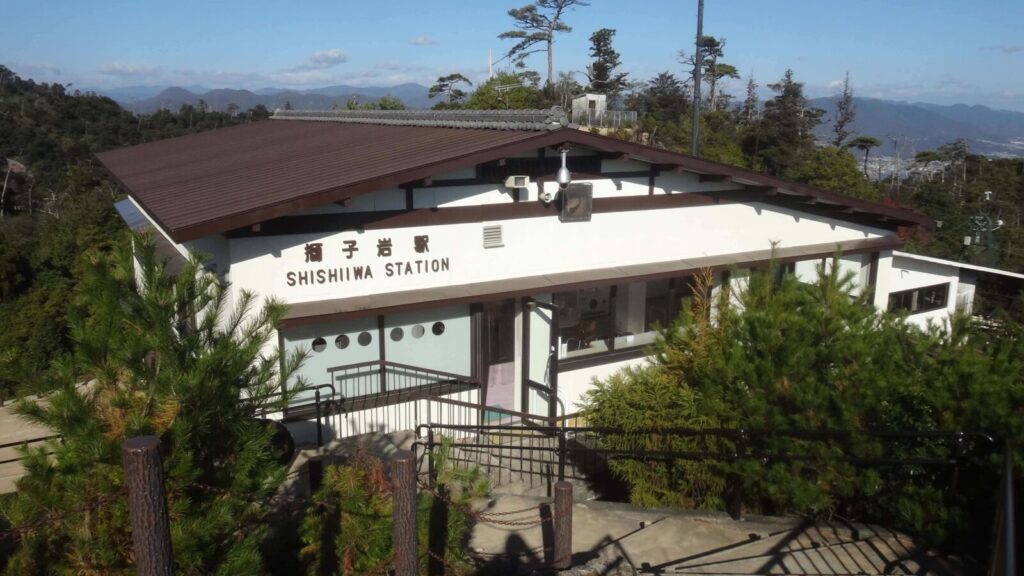
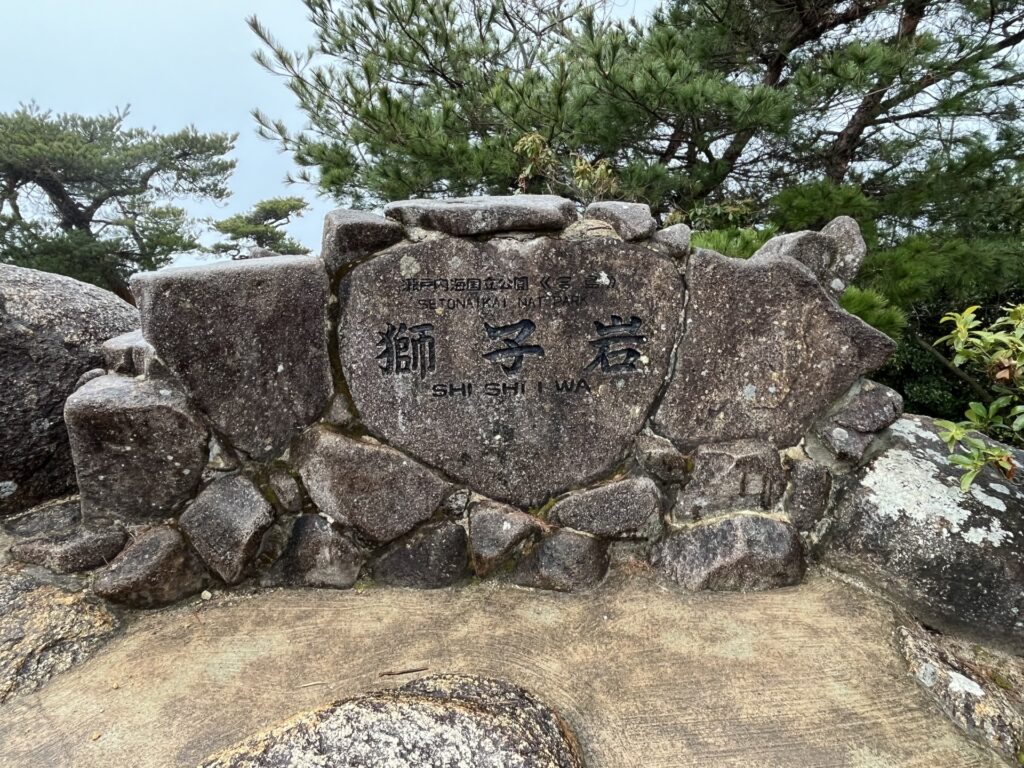
This observatory can be found right next to the Shishiiwa Ropeway Station. From here, visitors can get a fantastic view of the Seto Inland Sea and enjoy the crisp air of the mountain. There is no additional walking necessary to reach this location, so it is the best place to visit for those who are short on time or do not have the stamina for hiking to the summit.
Misen Hondo Hall
Misen Hondo Hall is located about a 20-minute walk away from the Shishiiwa Ropeway Station. This was the place which Kūkai built in order to complete his training on Mount Misen. Within the Misen Hondo Hall stands a statue of the bodhisattva Kokuzo. He is a Buddhist deity associated with wisdom and wealth, and it is said that it was this bodhisattva’s mantra which Kūkai repeatedly chanted during his training. Kokuzo is flanked by one of the Four Heavenly Kings, Bishamonten, on one side, and the wrathful deity Acala on the other.
On the back wall of the main hall there is a Mandala of the Two Realms, a set of two mandalas in which one represents the Diamond Realm and the other one the Womb Realm. These are the domains of unchanging wisdom and physical phenomena, respectively. Together they encapsulate the entire universe according to Mahāyāna Buddhist doctrine. This type of mandala is the most widely used one in the Shingon sect.
Reikado Hall
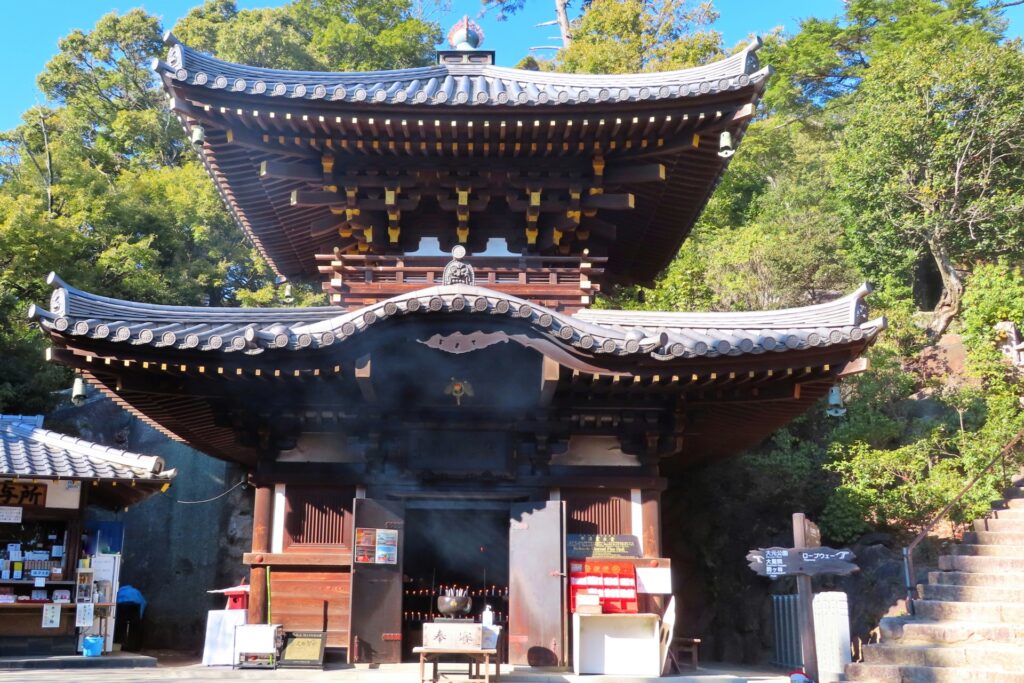
Reikado Hall stands right across from the Misen Hondo Hall and is best known for housing the "Unquenchable Fire," a flame which according to legend has been burning for about 1,200 years. This fire was supposedly first lit by Kūkai during his training at Mt. Misen and it is said that the sacred water boiled by the flames of this fire can treat any disease. In recent times, Reikado Hall has also become a place where lovers pledge their eternal love, which much like the "Unquenchable Fire," will never die out. The area in which this hall is located makes for a great resting place on the way to the summit.
Summit Observatory
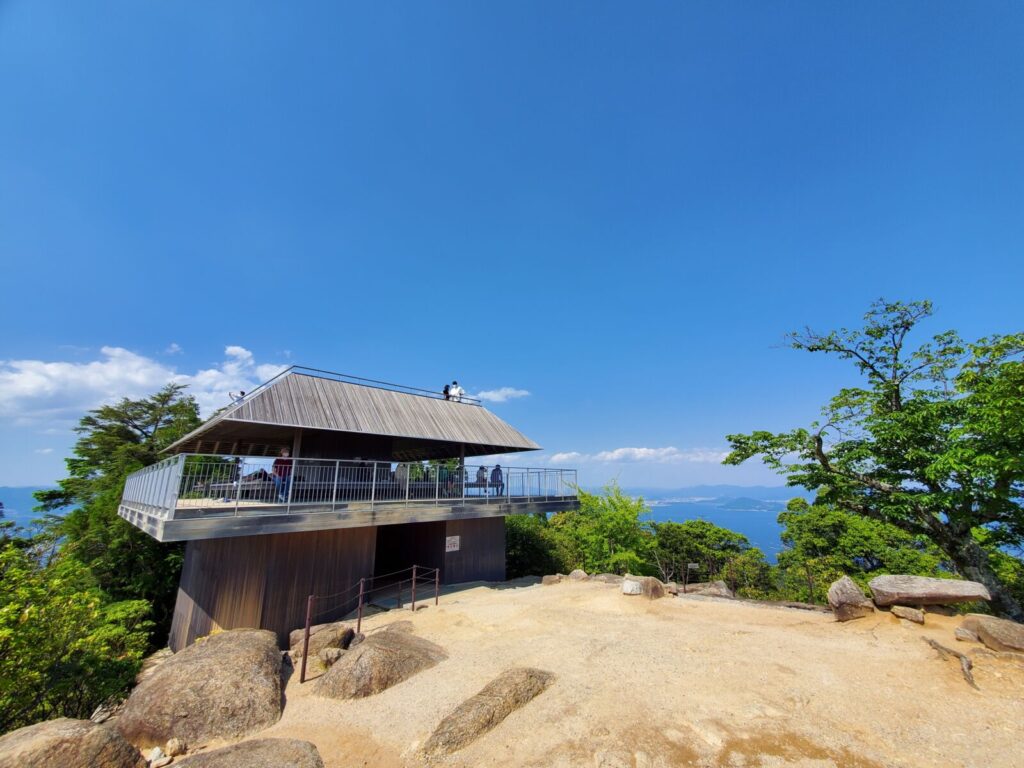
The Summit Observatory lies at the very top of Mount Misen, 535 meters above sea level. The only way to reach this observatory is through hiking, either starting from the Shishiiwa Ropeway Station or one of the three mountain hiking trails. Out of all the lookout points on Mountain Misen, the Summit Observatory offers, without a doubt, the most stunning and unobstructed view of the Seto Inland Sea. While it can be a bit of challenge to get here from the ropeway station, it is completely worth it.
Sankido Hall
Located a bit further up from Reikado Hall, the Sankido Hall houses the Sanki Daigongen, three guardian gods unique to Mount Misen. These guardians are all oni (Japanese term for ogre or troll)“versions” of certain Buddhist deities. The main god is called Tsuicho Kishin, and is based on Dainichi Nyorai, the Supreme Buddha of the cosmos in Shingon Buddhism. The other two are called Jibi Kishin and Mara Kishin. People mainly visit this temple to pray for the success of their business and the happiness of their family.
Monjudo and Kannondo Halls
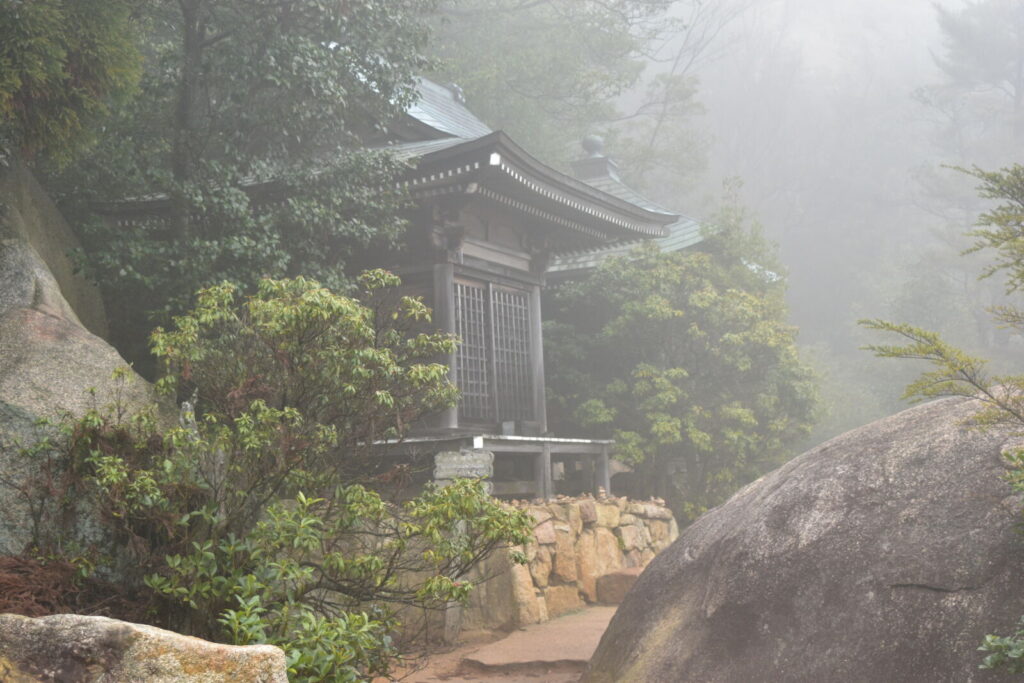
These two halls can be found just a short walk away from Sankido Hall on the way to the summit. The Monjudo Hall enshrines the bodhisattva Manjushri, who is known for bestowing wisdom. The Kannon Hall next to it enshrines the Kannon bodhisattva, often referred to as the “goddess of mercy.”
Dainichido Hall
Dainichido Hall is located on one of the two main paths which lead to the summit of Mount Misen from Reikado Hall. The construction of this structure was ordered by Mori Terumoto, a powerful feudal lord who was responsible for building Hiroshima Castle. Dainichido Hall was first built in 1599 and for about 250 years it was the most important structure on the mountain’s peak. All of the priests in Miyajima would gather in this hall for the first seven days of the year to pray for the emperor and prosperity of the nation. This changed in 1868, when a series of new laws meant to separate Buddhism and Shintoism made it so that Shinto priests of Miyajima could no longer take part in such a ceremony.
The hall enshrines three different deities. At the center stands a statue of Fudo Myo-o, one of the five Wisdom Kings of Buddhism. He is also the main deity of Daisho-in Temple. To its left and right lie two manifestations of Dainichi Nyorai, the Supreme Buddha of the universe in Shingon Buddhism. These two manifestations represent the Diamond Realm and Womb Realm which were mentioned earlier when describing the Mandala of Two Realms.
THE SEVEN WONDERS OF MOUNT MISEN
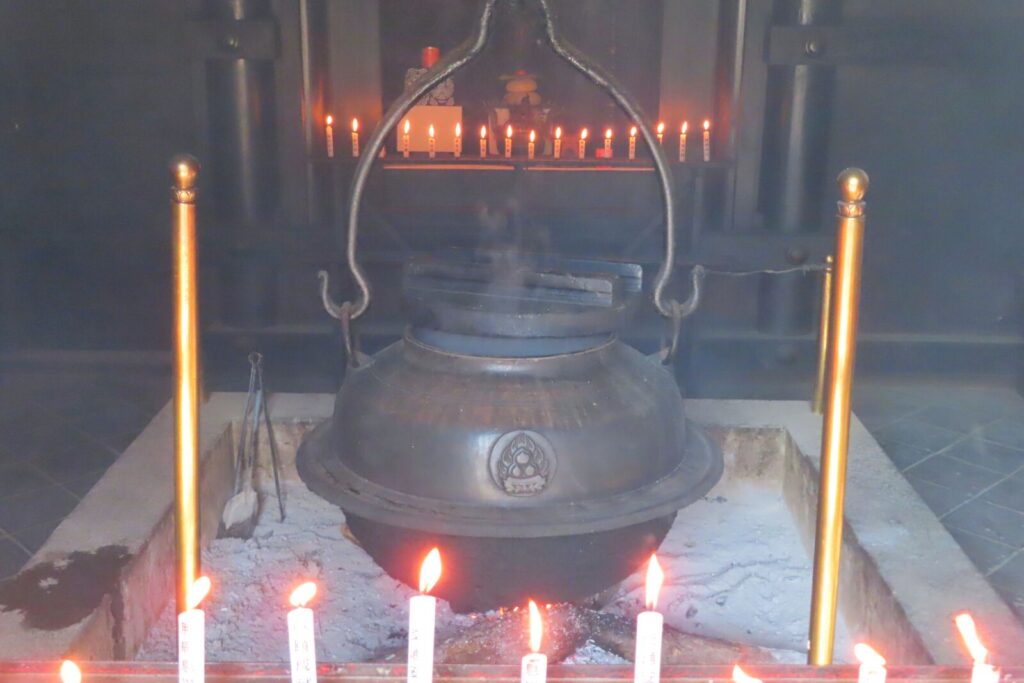
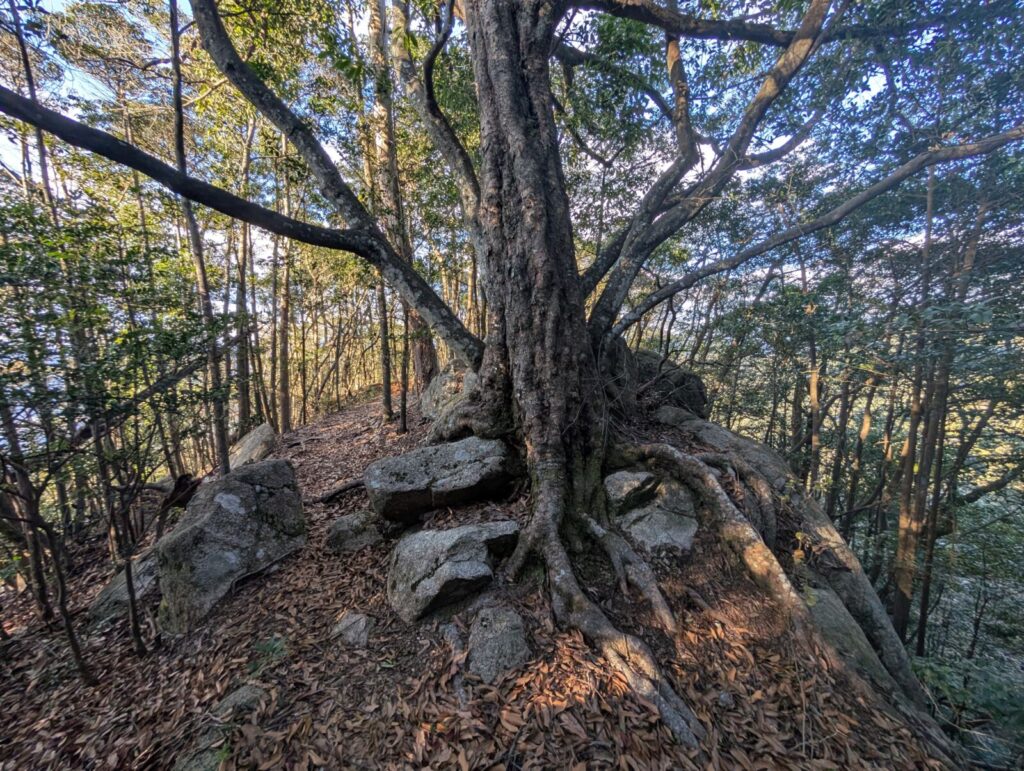
As mentioned previously, Mount Misen has long been regarded as a sacred location with high spiritual power. Perhaps due to this, there are several mystical phenomena which have been associated with the mountain since ancient times. Some of these otherworldly mysteries are collectively known as the “Seven Wonders of Mount Misen.”
The Eternal Fire
This sacred fire is said to have been burning for the past 1,200 years. It was supposedly lit by Kūkai during his ascetic training in the mountains. According to legend, the water which is boiled by this fire is capable of curing all illnesses. The Eternal Fire is also the source of the “Flame of Peace” in Hiroshima Peace Memorial Park.
Holy Plum Tree
There is a plum tree located next to the Misen Hondo Hall which is said to have formed from Kūkai’s crosier (staff). This tree normally blooms every year, and in cases that it does not, it’s seen as a sign of something ominous happening in the mountain.
Kanman-iwa Rock
This is a rock which has a small hole on its side and this hole mysteriously overflows with water during the high tide and dries up during the low tide. The hole is located at an altitude of about 500 meters and the salt residue left behind when the tide goes down proves that the water coming out of the rock is salty. Though it has not been scientifically proven, many believe that the water is coming from the ocean.
Sound of Wooden Clappers
Some people claim to have heard the sound of wooden clappers in Mount Misen in the middle of the night. It is said that this is the work of a Tengu (a mischievous supernatural being) and that if one does not stay inside while this sound can be heard, then they will be cursed.
Dewy Cherry Tree
This was a cherry tree which was perpetually covered with dew no matter the weather. Even on sunny days, the tree and the ground around it remained slightly wet. Unfortunately, this tree was cut down a long time ago and records from the Edo period are the only way we know about this phenomenon today.
Ryuto-no-sugi
On Mount Misen there used to be a cedar tree which, on the first night of the Lunar New Year, appeared to be surrounded by mysterious lights. These lights seemed to float on the sea surface and thus led to the name Ruto-no-sugi, meaning “Sea Fire Cedar.” Today it is not possible to see this tree since it has withered away.
The Great Mandara Rock
This is a huge rock formation located near the back of Misen Hondo Hall. It is engraved with various characters which are said to have been carved by Kūkai. Currently it is not possible to view this rock since the road to it became inaccessible after a typhoon.
ROPEWAY
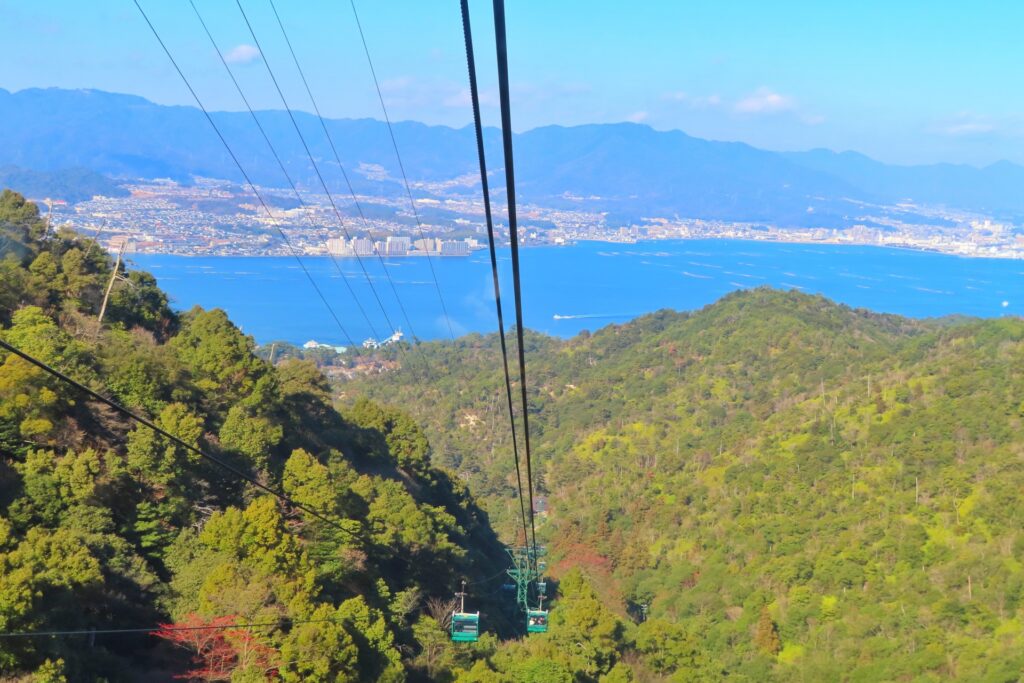
One of the easier ways to reach the top of Mount Misen is by making use of the Miyajima Ropeway. While riding the gondolas, travelers can get a unique aerial view of the mountain and its lush greenery. This ropeway operates from 9:00 to 16:00 going up, and the final return ride departs at 16:30. These hours can vary during the winter and services can be unexpectedly suspended due to bad weather. Visitors who miss the last trip down on the ropeway must make their way down the mountain on foot.
A roundtrip on the ropeway costs JPY2000 for adults (12+) and JPY1000 for children (6-12 years old). Tickets can be purchased at the Miyajima Ropeway Station located at the foot of the mountain. This station is about 20 minutes away on foot from Itsukushima Shrine and can be found by following the many directional signs placed throughout the island. When walking to the station you will have to make your way through Momijidani Park, a breathtaking maple tree park which is particularly stunning during the fall.
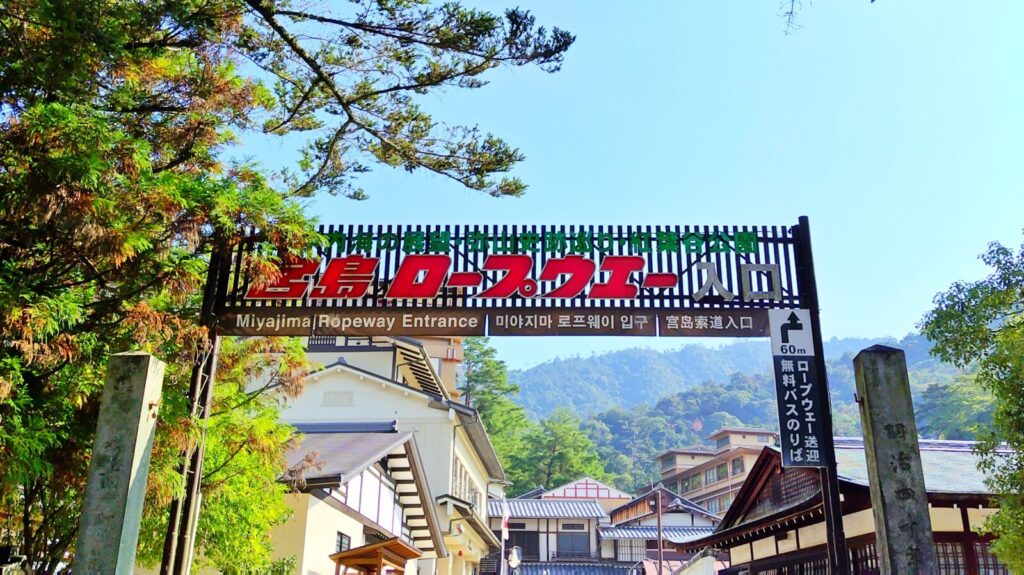
It is worth mentioning that there is a discount ticket visitors can purchase before arriving on the island. This ticket is only sold to those who use the Matsudai Kisen Ferry (as opposed to the JR Miyajima Ferry) and will allow adults to save JPY400. This ticket included a roundtrip on the ropeway as well as the ferry, and costs JPY2100 for adults. You can still save money when purchasing the combined ticket for children, but the difference between the full price and discount one is just JPY200 in that case.
For guests who might struggle with the walk to the Miyajima Ropeway Station, there is an option to board a free shuttle not too far from the Entrance Gate and before Momijidani Park. However, it is important to note that this bus does not run when there are many visitors on the island and the roads are crowded. The bus also does not begin service until 9:50 and runs only every 20 minutes. Lastly, it is a small vehicle, so it has very limited capacity. The free shuttle is a great choice for guests with mobility issues but if you are planning to make use of it, we recommend arriving around ten minutes before its departure to guarantee seating.
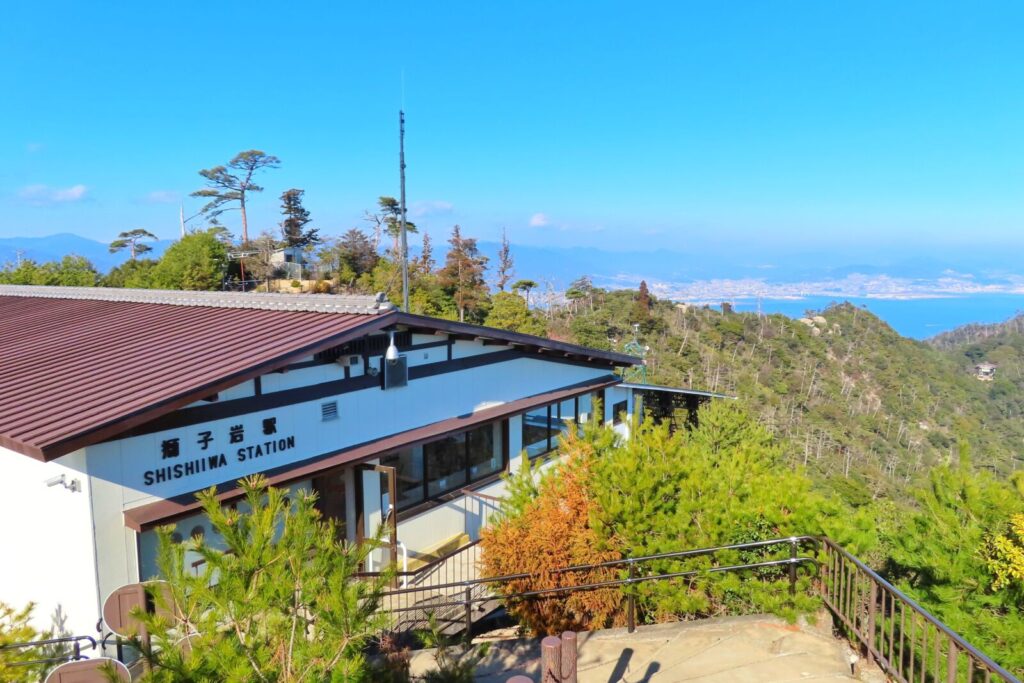
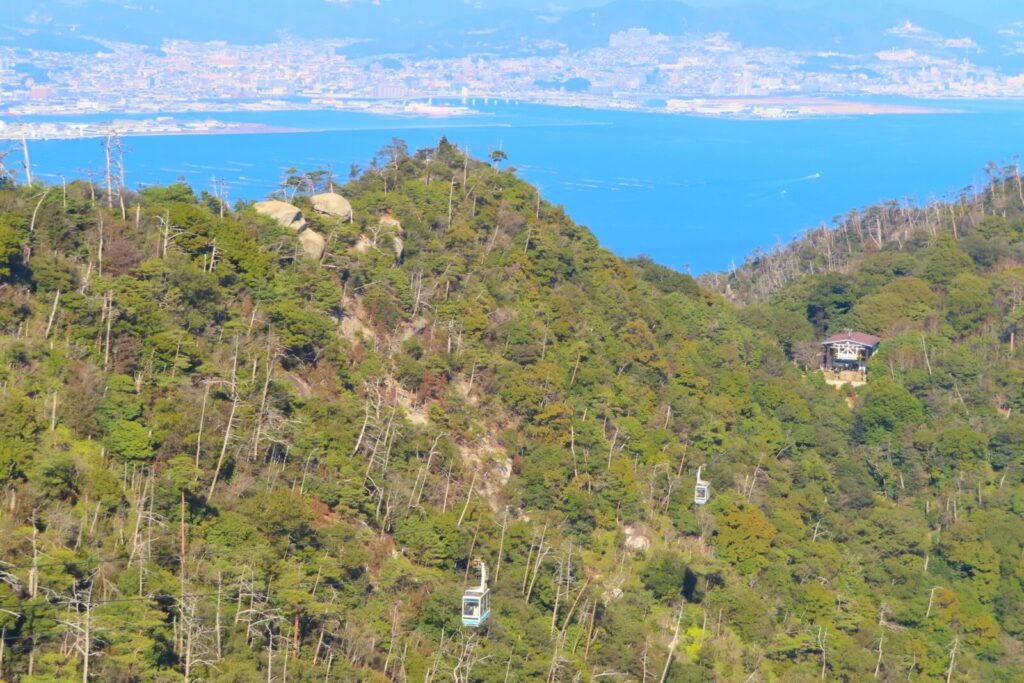
The ride up the mountain is actually split into two separate ropeways and one must transfer halfway through. The first one is a circulating-type ropeway which fits 8 people inside each gondola, takes 10 minutes to reach the next station, and runs in 1-minute intervals. The second ropeway has carriers which fit 30 people, and the ride is only 4 minutes long. It usually runs in intervals of 15 minutes and as such visitors can find themselves waiting in line for a long time during busy days. This ropeway drops you off at Shishiiwa Station which is located right next to the Shishiiwa Observatory and 430 meters above sea level.
Those wishing to reach the summit of Mount Misen and see other popular sites around the mountain top will have to do a bit of hiking. The summit and the highest observatory are about a 30-minute walk from the ropeway station. Along the way, travelers will be able to see several temples, such as Reikado Hall, and stunning views of the mountain. It is important to manage your time carefully when wanting to explore Mount Misen as it can take about one full hour to make it back to the ropeway station and visitors often find themselves missing the last ride down. This is particularly dangerous during winter when the sun goes down early, and you might be forced to hike down in the dark.
HIKING TRAILS
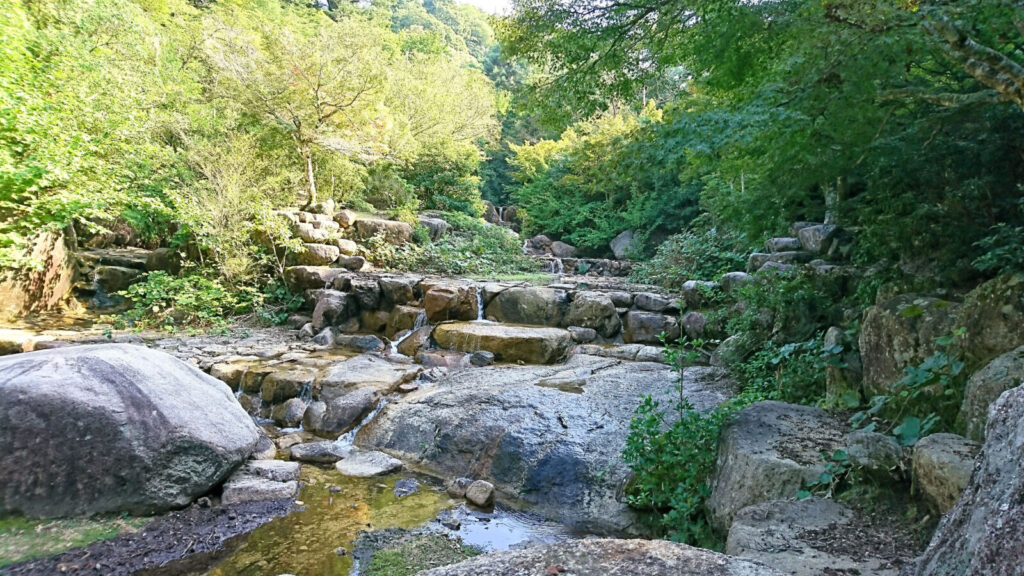
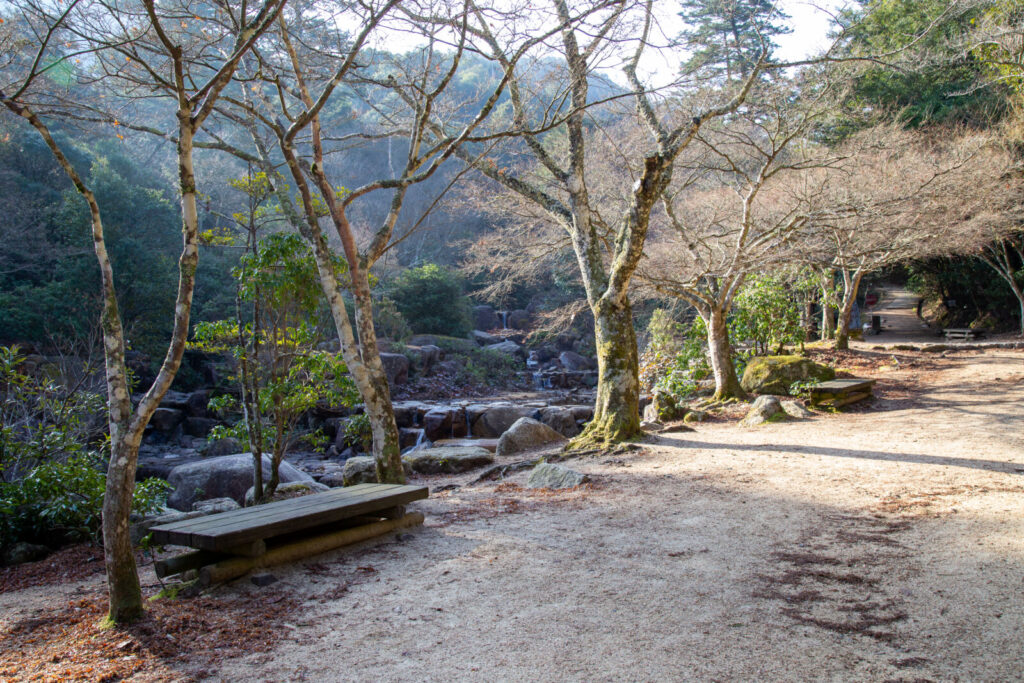
There are three main hiking trails in Miyajima: Daisho-in, Momijidani, and Omoto. Each of these trails or “courses” differ in steepness, length, and sightseeing opportunities. The Daisho-in trail starts to the left of the main gate of the Daisho-in Temple. This hike offers outstanding scenery and views but involves climbing a great amount of stone steps for the majority of the time. It can take between 1 hour 30 minutes and 2 hours to reach the summit with this course. This is perhaps the most popular trail, and we highly recommend it for those wanting to get the best views of the mountain.
The Momijidani course starts inside Momijidani Park and is the fastest route to the summit, taking approximately 1 hour and 30 minutes. However, it is also the steepest of all the hiking courses and is mostly a dirt trail with many big tree roots and large stone steps along the way. As this hike cuts through the forest, it is a wonderful experience surrounded by nature but without the more unique sights of the Daisho-in course. For visitors who are in good physical health and have a lot of experience hiking, this trail is a good way to make it up the mountain in the fastest way possible. On busy days tourists can find themselves waiting more than an hour to use the ropeway and might not even have time to reach the summit. If you’re up for the challenge, this might be the best option on those crowded days.
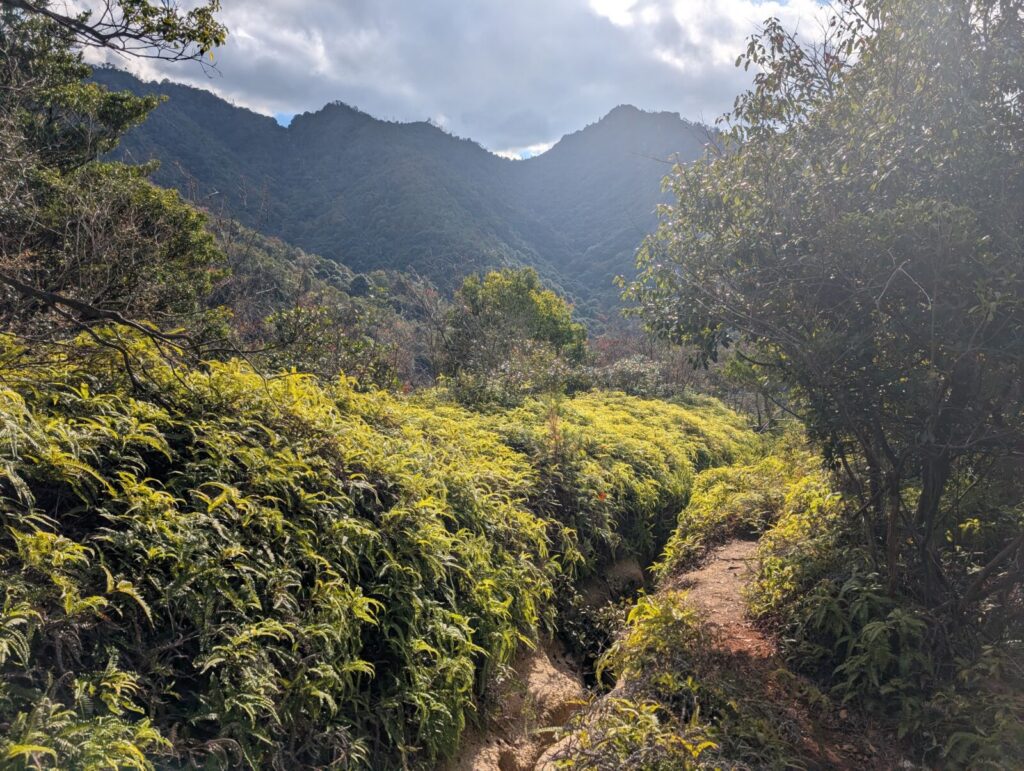
The last hiking trail is the Omoto course, which just like the Momijidani one, cuts through the dense forests of Mount Misen. It begins at Omoto Shrine (located near the aquarium) and will take guests through the tranquil Omoto Park, where they will encounter very few people but many deer strolling about. This hike is the longest of them all, taking approximately 2 hours or more to complete. If you have the time to spare and wish to enjoy the nature and wildlife of Miyajima, then this course is the one for you.
When exploring Mount Misen you don’t have to stick to just one trail! We actually recommend choosing different trails for the ascent and descent or using the ropeway to go up but hiking down afterwards. Whatever you end up doing, it is important to remember that these trails are far away from most emergency services and will lead you deep into the mountain where you might find yourself completely alone for long periods of time. There are venomous snakes on Mount Misen, so it is important to always stay alert. We do not recommend hiking when it is raining or after dark, so make sure to check the weather forecast and sunset times before you start. Lastly, make sure to wear clothes and shoes which are suitable for hiking and remember to stay hydrated!
TOURS VISITING MOUNT MISEN
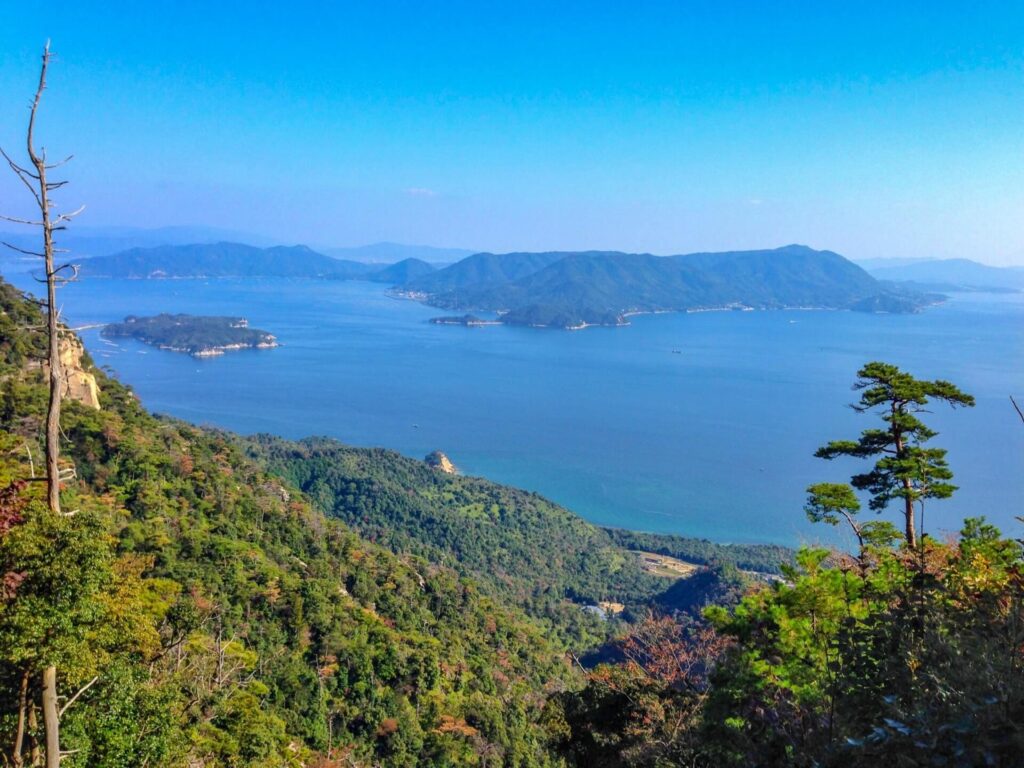
For visitors wishing to explore Mount Misen and enjoy the very best that Miyajima has to offer, we have a 1-day tour which will allow you to do just that! Our expert guides will take you on a guided tour of the island, with stops at iconic locations such as Itsukushima Shrine and Daisho-in Temple. You will also have the opportunity to ride the ropeway to the top of the mountain, hike to the summit, and admire an unobstructed view of the Seto Inland Sea. By joining this tour, you will not only learn about the history and culture of Miyajima but also immerse yourself in the pristine nature of the island. Click “Book Now” and get ready for an unforgettable day in one of Japan’s three most scenic locations.
Of course, we offer many other tours in Hiroshima Prefecture and its surrounding area. Some of these include visits to Miyajima without the ropeway experience but with other fantastic sightseeing opportunities. If you'd like to learn more about these tours, check out our "Best Tour around Hiroshima" webpage.



